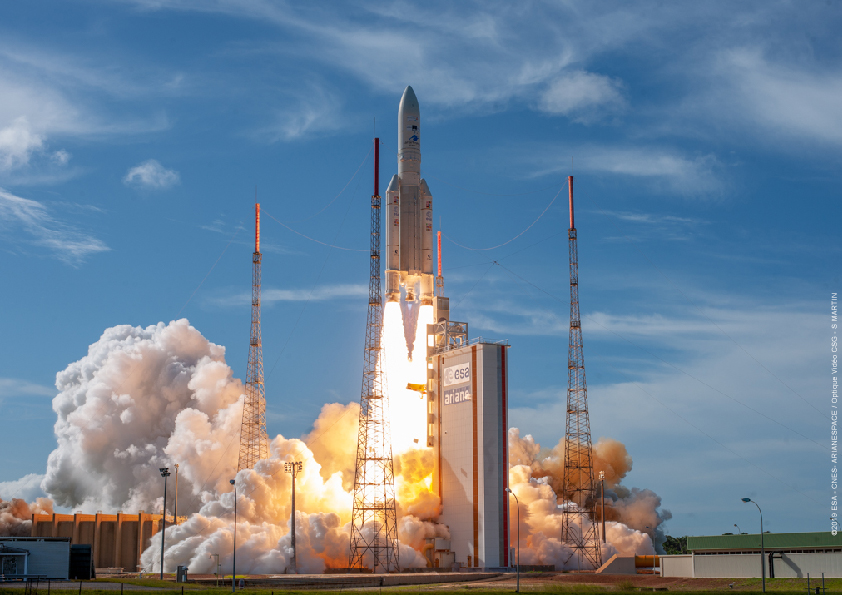
The second satellite to join the constellation that forms the European Data Relay System (EDRS) has been successfully launched.
The satellite was launched on board an Ariane 5 from Europe’s Spaceport in Kourou, French Guiana on 6 August at 21:30 CEST (19:30 UTC).
EDRS enables people to observe the Earth almost live, accelerating responses to emergency situations and spurring the development of new services and products that create jobs and increase prosperity.
EDRS – dubbed the ‘SpaceDataHighway’ by its private operator, Airbus – uses innovative laser technology to dramatically cut the time needed for Earth observation satellites to deliver information to the ground.
The satellites can transmit data at a rate of up to 1.8 Gbit/s.
The latest satellite, called EDRS-C, will operate in geostationary orbit. It will join its sister EDRS-A, which was launched in January 2016.
The geostationary position, higher than typical low-Earth orbiting observation satellites, will enable the constellation to maintain an almost constant connection with the low-Earth orbiting satellites that could otherwise only transmit their information when in direct line-of-sight with their ground stations, which introduces delays of up to 90 minutes.
Instead, the EDRS satellites can then beam the information back to Earth in almost real time.
Since the end of 2016, EDRS has, on a daily basis, been transmitting the images of Earth acquired by the Copernicus programme’s four Sentinel observation satellites.
It is also due to relay information from the International Space Station, once the required equipment is installed on the outside of Europe’s Columbus laboratory.
EDRS is a new, independent European satellite system, and is a public–private partnership between ESA and Airbus as part of ESA’s efforts to federate industry around large-scale programmes, stimulating technology developments to achieve economic benefits.
On this launch, Ariane 5 features new slightly elongated upper-stage cryogenic tanks. This has allowed them to carry several hundred kilograms more propellant, bringing a launcher performance gain of about 100 kg payload allowance to geostationary orbit, corresponding to an extended burn duration of about 30 seconds.
These modifications are part of ESA’s continued development that makes Ariane 5 and Europe’s future Ariane 6 competitive in the global launch market.




